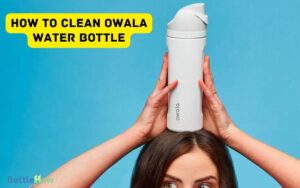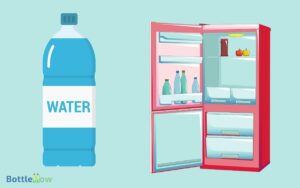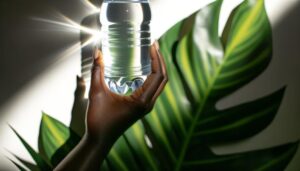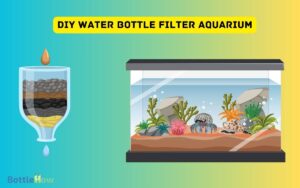How Many 16 Oz Water Bottles Are in a Gallon? A Guide!
To determine how many 16 oz water bottles are in a gallon, you need a simple conversion. A U.S. gallon equals 128 fluid ounces.
By dividing 128 by 16, you find that one gallon contains exactly eight 16-ounce water bottles. This conversion is essential for tracking hydration, planning events, and managing water supply effectively.
Knowing such precise terminology guarantees you’re making confident decisions about your liquid measurements and intake.
Understanding this basic calculation is the first step to mastering more complex liquid measurements and health considerations. There’s a lot more to learn beyond just simple conversions.
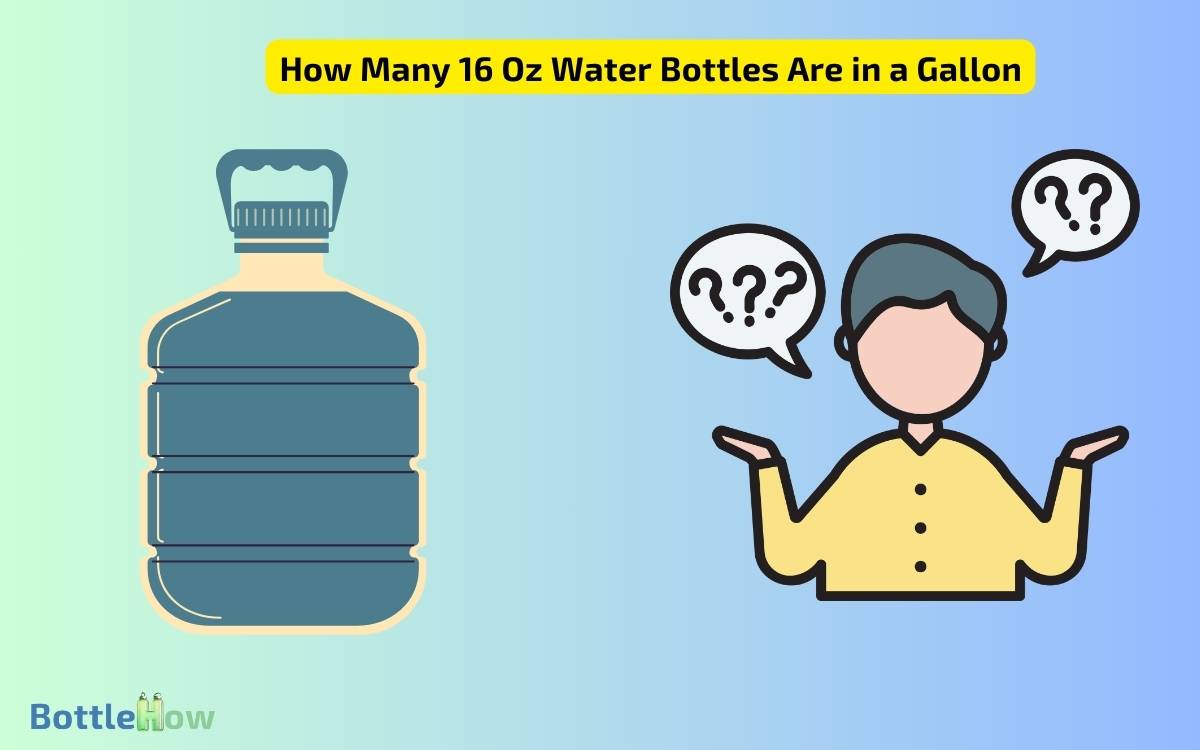
Key Takeaways
Understanding Gallon Measurements
A gallon is a unit of measurement for liquid volume that’s commonly used in the United States. When you measure liquids, a U.S. gallon equals exactly 128 fluid ounces. This metric is essential in various applications, from everyday hydration tracking to industrial fluid management.
Understanding gallon measurements helps you accurately quantify and distribute liquids, ensuring consistency and efficiency. For instance, if you’re managing water intake, knowing that a gallon contains 128 fluid ounces provides a clear framework. This knowledge is particularly valuable when dealing with larger volumes, as it simplifies the process of breaking down or converting liquid quantities.
Accurate gallon measurements enhance precision in cooking, scientific experiments, and even automotive fluid refills, making it an essential unit in many fields.
Conversion Basics
When converting liquid measurements, start by recognizing that 128 fluid ounces make up one U.S. gallon. This knowledge forms the basis for understanding how many smaller units, such as 16 oz water bottles, fit into a larger volume.
By mastering this conversion, you’ll be able to:
- Safely plan your hydration needs for activities or events.
- Effectively manage your water supply during trips or emergencies.
- Confidently make informed decisions about liquid measurements in recipes.
Precise conversions guarantee that you can effectively manage liquid quantities, whether you’re working on a project, preparing for an outing, or simply planning your daily water intake. Understanding these basics sets the foundation for more complex calculations and practical applications.
Calculating Ounces in a Gallon
To calculate how many 16 oz water bottles are in a gallon, start by dividing the total number of fluid ounces in a gallon (128) by the fluid ounces in one bottle (16). This results in the equation 128 ÷ 16, which equals 8.
As a result, you can determine that one gallon consists of exactly eight 16-ounce water bottles. This method guarantees precision and accuracy, important for understanding fluid volume measurements.
How Many 16 Oz Bottles
Given that a gallon contains 128 fluid ounces, you can determine there are eight 16-ounce bottles in a single gallon by simple division.
This calculation is straightforward: divide the total number of fluid ounces in a gallon (128) by the ounces per bottle (16). The result is exactly eight bottles. This means that if you have a full gallon of liquid, you can fill exactly eight 16-ounce bottles without any leftover. Understanding this simple division can be useful when planning hydration for sports events or workouts. If you’re wondering how many ounces in Gatorade bottles, they commonly come in sizes like 12, 16. 9, or 32 ounces, which can affect how many servings you get from a gallon.
Understanding this conversion is essential for various practical scenarios, such as:
- Hydration Goals: Ensuring you drink enough water daily.
- Event Planning: Estimating the number of bottles needed for a gathering.
- Storage Solutions: Efficiently organizing your space for bottled water.
Practical Uses for the Conversion
Understanding there are eight 16-ounce bottles in a gallon is essential for accurately managing hydration, event planning, and storage logistics.
When organizing events, you can accurately calculate the number of water bottles needed based on attendee count and expected consumption.
For storage, this conversion helps you optimize space by determining the exact volume of water you need to store. Additionally, it assists in budgeting by allowing you to estimate costs more accurately.
For outdoor activities or travel, grasping this conversion ensures you bring sufficient water without overpacking.
This knowledge is vital in scenarios requiring precise water measurements, promoting efficiency and effectiveness in your planning and execution.
Hydration and Health
Proper hydration is essential for maintaining peak physiological functions and overall health. When you hydrate adequately, your body can regulate temperature, transport nutrients, and remove waste efficiently.
Data indicates adults should consume approximately 3.7 liters of water daily for men and 2.7 liters for women. Dehydration can negatively impact cognitive performance, physical endurance, and cardiovascular health.
Consider these impacts of insufficient hydration:
- Fatigue: Even mild dehydration can sap your energy and make you feel tired.
- Headaches: Lack of water can lead to headaches and even migraines.
- Mood fluctuations: Dehydration can affect your mood, leading to irritability and confusion.
Staying properly hydrated maintains that your body operates smoothly and supports your overall well-being.
Environmental Impact
You should consider the environmental impact of using 16 oz water bottles, as they contribute considerably to plastic waste accumulation.
Recycling these bottles presents challenges due to contamination and low processing rates.
To mitigate this, explore alternatives like reusable water bottles and water filtration systems.
Plastic Waste Accumulation
Each year, millions of plastic water bottles make a substantial contribution to the global plastic waste crisis, with a large portion ending up in oceans and landfills.
You mightn’t realize that these bottles take hundreds of years to decompose, releasing harmful microplastics into ecosystems.
The sheer volume of plastic waste is staggering, posing severe risks to marine life and human health.
- Over 8 million tons of plastic enter the oceans annually.
- 90% of seabirds have ingested plastic particles.
- 1 million marine animals die each year due to plastic debris.
Recycling Challenges Faced
While reducing plastic waste is critical, effective recycling faces substantial challenges, including contamination, inadequate infrastructure, and low public participation rates.
Contamination occurs when recyclable materials are mixed with non-recyclables, rendering entire batches unusable.
Inadequate infrastructure, such as insufficient recycling facilities and collection services, hampers the processing of recyclable materials efficiently.
Low public participation rates further exacerbate the issue; studies show that only about 30% of plastic bottles are recycled in the U.S.
The complexity of plastic recycling, marked by different resin codes and the need for thorough cleaning, often deters proper disposal.
These obstacles contribute to the inefficiency of recycling systems, resulting in significant environmental impacts and highlighting the need for enhanced public awareness and improved recycling technologies.
Alternatives to Bottled Water
Switching to reusable water bottles greatly reduces plastic waste and minimizes environmental impact.
By opting for a durable, refillable bottle, you help decrease the 8 million metric tons of plastic that enter our oceans annually.
Reusable bottles, typically made from stainless steel, glass, or BPA-free plastic, offer sustainability without compromising water quality or safety.
Consider these emotional impacts:
- Ocean Pollution: Imagine marine life entangled in discarded plastic, struggling to survive.
- Landfill Overload: Visualize mountains of single-use bottles filling landfills, taking centuries to decompose.
- Resource Depletion: Think about the petroleum used to produce plastic bottles, depleting non-renewable resources.
Tips for Staying Hydrated
Staying hydrated can be effectively managed by monitoring your daily water intake and incorporating hydrating foods into your diet.
Aim for at least eight 8-ounce glasses of water per day. Track your consumption using a water tracking app.
Also, include fruits and vegetables with high water content like cucumbers, watermelon, and oranges.
Here’s a quick reference table:
| Item | Water Content (%) | Serving Size |
|---|---|---|
| Cucumber | 95% | 1 cup |
| Watermelon | 92% | 1 cup |
| Oranges | 86% | 1 medium |
Make sure you’re drinking water before, during, and after exercise. Adjust your intake based on climate and activity level. Staying hydrated helps maintain peak bodily functions and overall health.
Conclusion
Understanding how many 16 oz water bottles are in a gallon equips you with valuable knowledge for daily hydration and environmental impact. Remember, there are 8 bottles in a gallon.
By being mindful of your water consumption, you not only benefit your health but also contribute to a sustainable future.
So, next time you grab a water bottle, think of the ripple effect it creates—small actions can lead to big changes.
Stay hydrated, stay informed.


